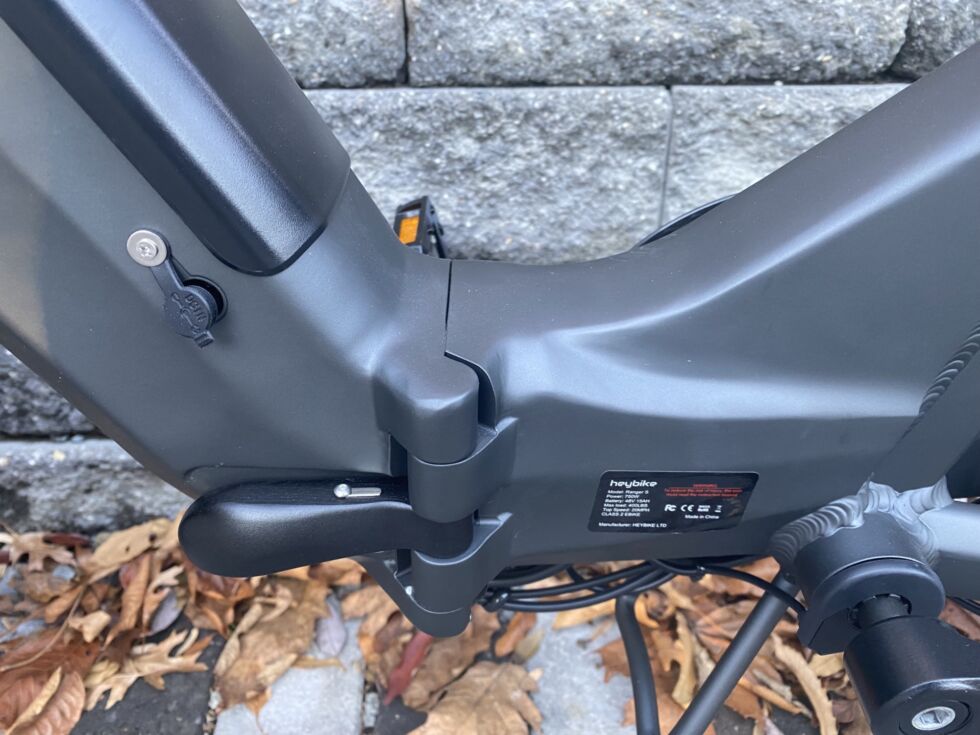
John Timmer
The arrival of e-bikes has blurred the lines between bicycles, mopeds, and scooters. Depending on what country or state you’re in, some e-bikes can legally hit 45 km/hour (28 mph), yet they don’t require a license, registration, or insurance, unlike their competitors. Whether that’s a good or bad thing depends on whether the bike riders in your area ride like lunatics or not.
Regardless of how you feel about the state of things, it’s definitely true that most e-bikes are relatively bike-like compared to mopeds and scooters, lacking things like brake lights, directionals, and other components that make navigating in urban environments a bit safer. Most, but not all. Heybike offers a number of scooter-substitute e-bikes that come with a powered horn, brake lights, directionals, and a zippy motor. As a bonus, they’re foldable. We checked out its latest model, the $1,499 Ranger S.
A foldable heavyweight
Let’s address one thing right away: In our review of the Ranger S’s sibling (the Tyson), we ran into a number of mechanical problems that threatened to make the bike unusable. The only real issue we saw on the Ranger S was a rapidly fluctuating reading of battery capacity. Otherwise, the bike was solid.
Another minor problem we had was with a metal loop that Heybike includes to protect the rear derailleur from damage. Apparently, it served that role during shipping, as it was bent in such a way that it kept the derailleur from reaching the smallest two gear rings. This was pretty easy to spot, and also easy to bend back into its normal position, after which all seven gears were accessible.

John Timmer
The bike’s folding mechanism worked without issue—the frame folds in half so that the front and rear wheels wind up next to each other, and the handlebars fold down to the side. When folded, a different metal loop keeps the front gear ring from resting on the ground.
This is not, however, a “fold it and carry it up the stairs to your apartment” bike. The Ranger S weighs over 32 kg (72 lbs). That’s over 15 kg more than the Gocycle folding bike we reviewed earlier, and it’s enough to make moving it around a challenge. It also lacks any sort of mechanism for holding the bike in a folded position (I’d recommend investing in a bungee cord if you get one), meaning it has a tendency to flop back open as you’re shifting it, adding to the challenge.
This is not to say the folding is pointless. You can definitely store it in a smaller space than many other e-bikes. And it was a snap to lift it into the hatchback I drive, allowing me to take the car in for service without needing to find a place to sit for a few hours. But it doesn’t open up the full range of use cases that an easier-to-manage folding bike would.

John Timmer
The upside of the robust construction is that the Ranger S can haul a lot of stuff. The total capacity is listed as 180 kg (400 lbs) between rider and cargo. Heybike offers panniers for the rear rack, with 30 liters of capacity, and you can place up to 13 kg (28 lbs.) in an optional front basket. This isn’t a cargo bike, but it can definitely haul some groceries home, even if you’re a heavy rider.
The drivetrain
The Ranger S is a Class 3 e-bike, meaning it has a maximum speed of 45 km/hour (28 mph). That comes thanks to a 750-watt motor that can hit a peak output of 1,200 W. Heybike rates its 14.4 Ah battery as providing enough juice to provide pedal assist for up to about 90 km (55 miles), but that is presumably at its lowest assist setting. It’s clear that running it on its maximum assist setting burned through the battery far more quickly than that, although the rapidly fluctuating battery meter on the display made it difficult to tell just how much more quickly—or how much further I could go before the battery went flat. Range anxiety joined me for many of my rides.
The motor is tied to a cadence sensor, which registers when you’re turning the pedals and kicks in the assist if you are. Since you have to pedal an otherwise very heavy bike for a bit before the sensor triggers the motor, there’s also a throttle that will take you up to 32 km/hour (20 mph) before cutting out.









